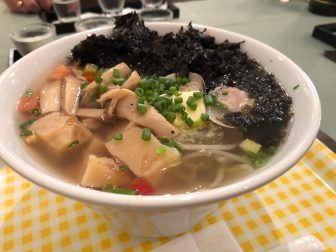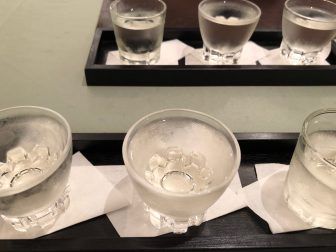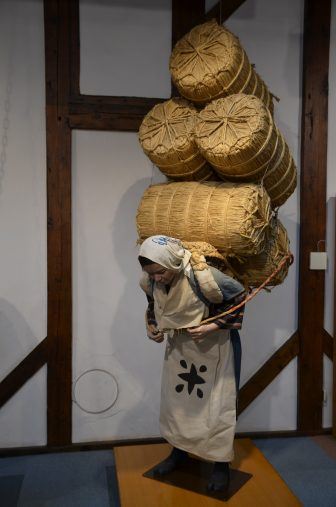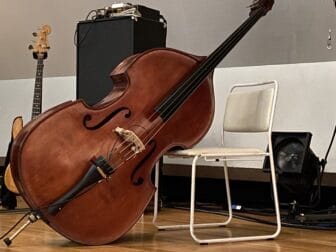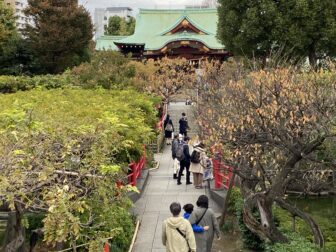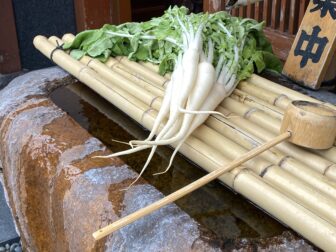
[ Sept.2018 ] We moved from Murakami in the Niigata prefecture to Sakata in the Yamagata prefecture in Japan by express train.
The train went along the coast and we saw simple fishing villages on the way, which was lovely.
When we arrived, Sakata was quiet and deserted.
I had checked how to get to the hotel we had booked, but it was not needed, because there was only one building near the station, which was our hotel called ‘Hotel Inn Sakata Station’.
We met our friend from Tokyo here as we had planned and we all went to the Italian restaurant called ‘Angelo’ within the hotel and ate Ramen (a Japanese noodle dish).
I was curious about this mismatch and it turned out that it was a tasty Italian-style Japanese noodle.
By the way, we saw a menu with ‘Ramen’ in a posh restaurant in Milan recently, though we did not try it, so Ramen in an Italian restaurant may not be so strange now.
In this Italian restaurant in Sakata there was a sake sampling menu, too.
This is possible only because Sakata is a famous sake-producing town.
Our waitress said “Everyone in this town drinks at least one small cup of sake everyday”.
She has got her own favourite brand and when we asked about the sake we were going to drink, she explained specifically about the sake rice, which we did not expect from the waitress of an Italian restaurant.
After we 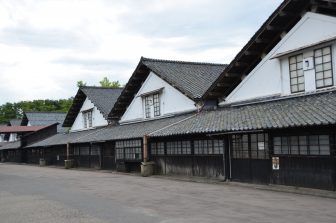
Sankyo Soko is the storage unit for rice, built in 1893 and to my surprise, it is used as rice storage even now.
There are 12 buildings and among them, there is a museum, a shop and a restaurant.
We went into the Shonai Rice History Museum.
There were life size models to show how people used to work here, for example, inspecting the quality of the rice.
The first thing I noticed and got surprised at was that next to the working men, there was a model of a woman carrying the straw bag.
Manual labouring is for men, isn’t it?
But when we moved on, we found another female model carrying as many as 5 straw bags on her back.
One straw bag weighed 60 kg, so she was carrying 300 kg.
The explanation plate said that women in the past were really strong.
Amazing!
Apart from that, there were some interesting exhibits such as the photos showing how busy and lively it was here in the past.
This storehouse’s special feature is the two-tiered roof.
According to the signboard, a space was created between the earthen-walled storehouses and the roofs to allow the air to circulate and to prevent the temperature inside from rising.
Also, what I learned from the exhibits in the shop was that Sakata is the place where Oshin went for serving her apprenticeship.
Oshin is the famous TV drama broadcast in the early 1980s, which was a great hit.
We arrived here by crossing a bridge and saw the whitewashed walls, but the back of the buildings were all wooden in black colour, which looked very nice with the row of zelkova trees.

